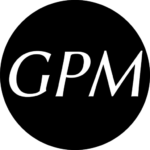Boundary Crossing in Composition
A Course Design

Introduction
Boundary crossing is hardly a new area of inquiry for writing pedagogy; the metaphor of boundaries has seen widespread widespread application in the field of composition studies since at least the introduction of foundational texts like Rose’s (1989) Lives on the Boundary and Pratt’s (1991) “Arts of the Contact Zone.” In more recent years, the field of boundary-crossing phenomena of interest to writing teachers has expanded to include such diverse topics as translingualism (Ayash, 2019), multimodality (Shipka, 2011), transfer (Yancey et al., 2014), collaborative writing (Wolfe, 2010), community engaged writing (Blancato et al., 2019), and more.
The course design in this chapter presents research and reflection on an example of what a curriculum intentionally centered on boundary-crossing might look like in a first-year writing course. As it advocates for the values of a boundary-crossing pedagogy, this chapter also asks questions about the complexities and challenges of expanding the bounds of what has traditionally been recognized as writing.
© Gabriel Morrison, 2021

